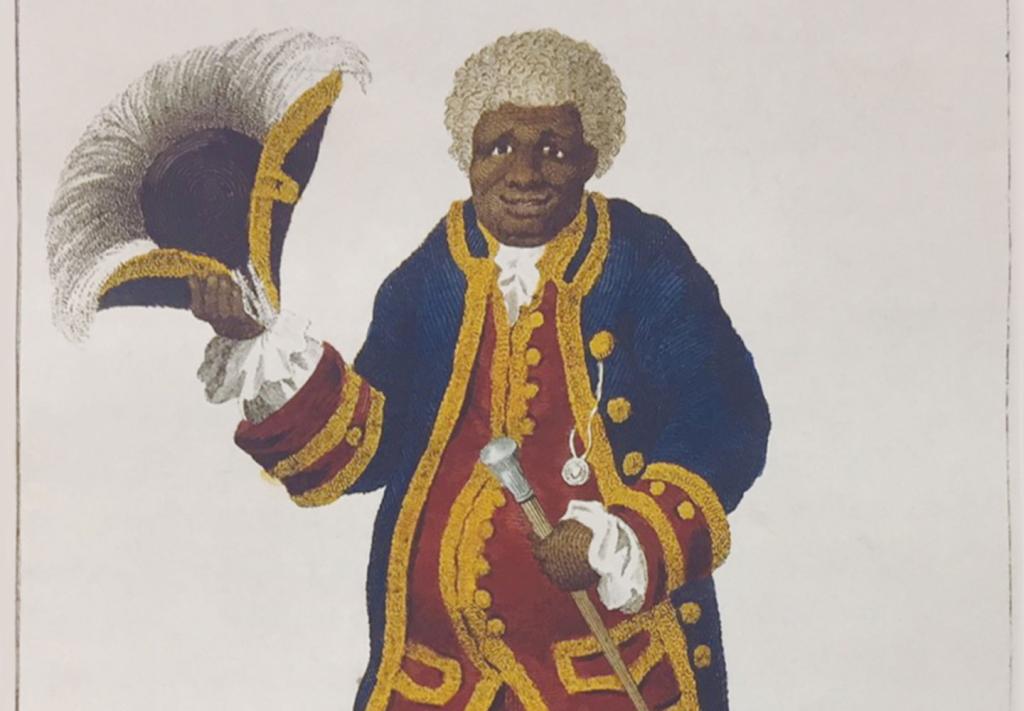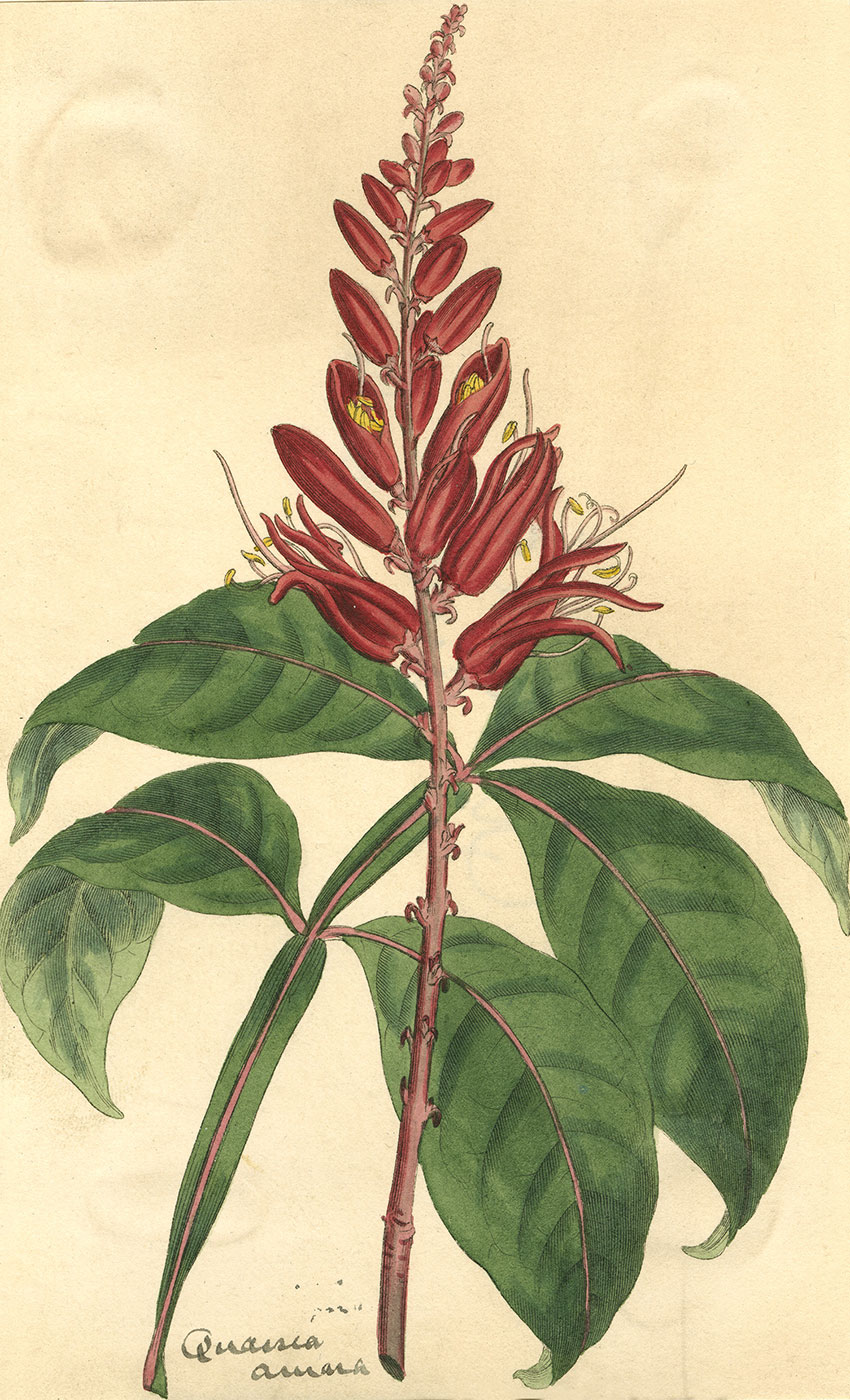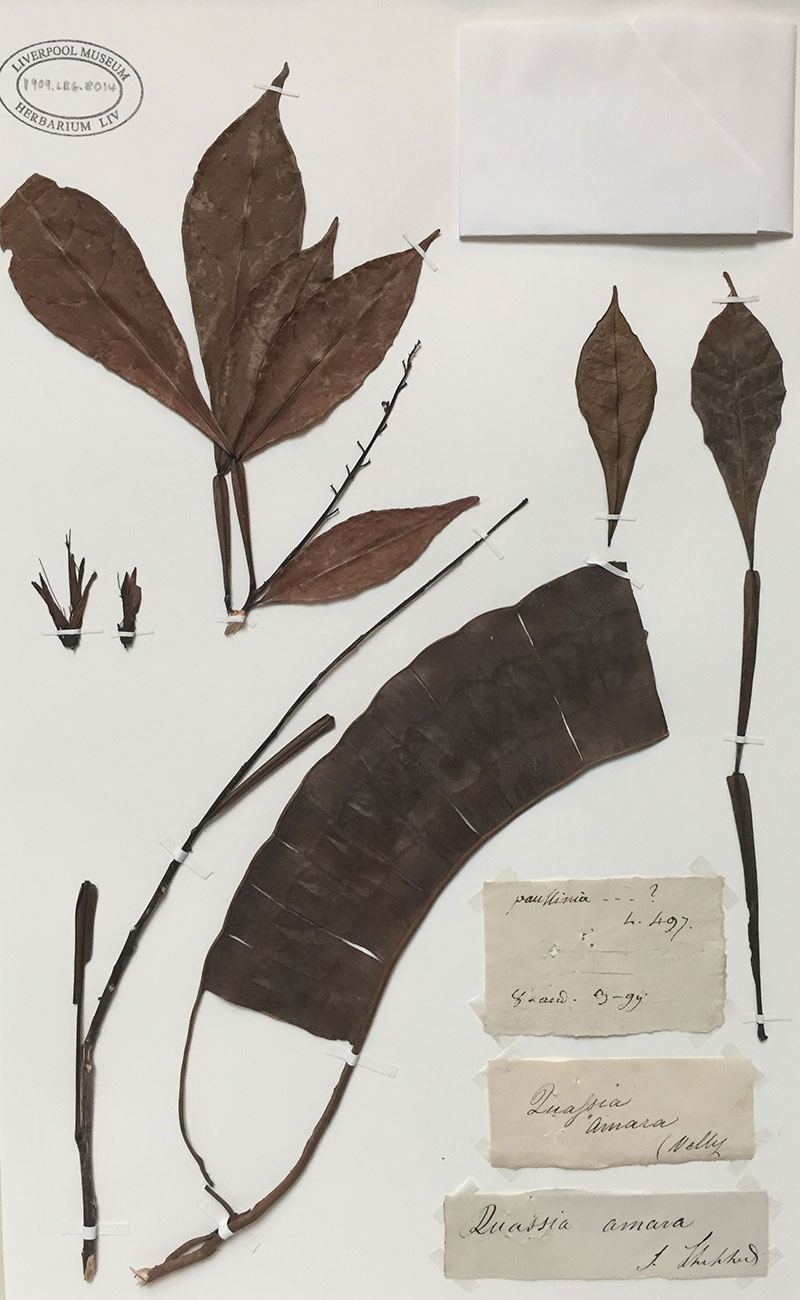In focus: Graman Kwasimukambe
See our new botanical display in World Museum celebrating Graman Kwasimukambe.

Kwasi (also known as Kwasimukambe and Graman Quacy) was born in Ghana, West Africa around 1690. As a young man he was captured, enslaved and transported to Suriname, a Dutch colony in South America. There he was forced to work on the sugar plantations.
He was skilled in 'obeah' - medical and spiritual knowledge. As well as tending other enslaved people, he used his botanical knowledge to treat Europeans and earned money from his medicines.
Around 1730, Kwasi discovered the medical properties of a plant which, when made into a tea, could treat fever and ward off parasites such as lice, fleas and mosquito larvae. In 1762 the Swedish botanist Carl Linnaeus - who devised the system by which we still name all plants and animals today - named the plant 'Quassia amara' in honour of him.

European wealth has been built upon the trade in plant raw materials for commerce and industry. European explorers and scientists received fame and financial gain, built upon the botanical knowledge of indigenous people. It was very unusual to acknowledge the contribution to science by a Black person in the 18th century.
The plant became widely known around the world and continues to be used in both herbal and industrially produced medicines today.
A new display in World Museum features objects from our botanical collection - a pressed specimen grown at Liverpool’s first botanic garden, a medical jar of wood chips and a print of a beautiful flower - all Quassia amara.

Further information on Kwasi’s life can be found here on the Natural History Museum’s website.
Top image: 'The Celebrated Graman Quacy' by William Blake ©Huntington Library and Art Gallery
